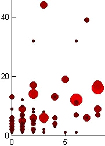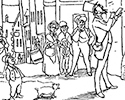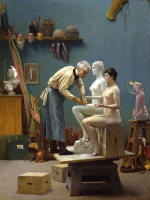X
Please wait for the PDF.
The browser will either open the file, download it, or display a dialog.
The browser will either open the file, download it, or display a dialog.

The digital tool Tracing Transformations in a Digital Age uses mapping and time-aware tools to visually reconstitute the spatial history of Civil War– and Reconstruction-era Hilton Head, one of the Sea Islands off the coast of South Carolina. In our own time, Hilton Head Island is known as a vacation paradise with pristine white-sand beaches and manicured golf courses. The history of the spatial transformation of the island and its direct connection with the local transition from slavery to freedom is important yet infrequently told, let alone shared in an open-source format. Changes in the island’s use, coupled with the natural ravages of time (including a severe hurricane in 1893), have effaced many of the material traces of Hilton Head’s past, leading researchers to rely more heavily on other evidence of the area’s history. Tracing Transformations mines extant archival sources and uses that information to reconstruct the region’s visual transformation between the years 1860 and 1865.
Statistical analysis of reviews and catalogs reveals that ten artists exhibited the largest number of works over the longest duration at the Salons of the Rose + Croix and were considered key members by contemporary critics. These artists have not all received a proportional quantity of recent scholarly attention, even though they were the only artists who exhibited in at least half of the events, showed a minimum of ten total works, and were referred to in at least fifteen of fifty contemporary reviews of the Salon.
This article examines multiple marquillas cigarreras—color-illustrated cigarette packages produced in Havana during the second half of the nineteenth century. It focuses on their construction of salacious jokes centered on the public interactions between white men and mulatto women. On the one hand, marquillas featuring sexually available mulatas enticed men to buy cigarettes. On the other hand, the jokes represented in them sought to ridicule white male desire for women of color. Considering the marquillas as both a form of commercial advertising, and a platform for the dissemination of social warnings, this essay shows how Havana’s tobacco manufacturers participated in statewide initiatives aiming to reform civic education and social hygiene in the Cuban capital.
Léonce Petit stands out for broadening the horizon of cartooning, both figuratively and literally, in lithographs and comic strips from 1863 to 1884. They introduced landscape art to caricature, as well as an atypical outlook on country life. This study highlights the singularity of Petit’s visual/textual narrative strategies and aims to rectify an unreliable characterization that has followed his remembrance since the turn of the twentieth century. It retraces the evolution of his work and maps out a network of influences and confluences in cartooning, literature, and painting, which make his oeuvre a rare body of poetic realism for nineteenth-century word/image studies.
This article offers iconographical and historical analysis of a cycle of domestic mural paintings by French artist Jean-Joseph Benjamin-Constant for the house of Frederick L. Ames in Boston, Massachusetts. Created in 1889–90, the murals depict historical figures from Late Antique Byzantium, including Emperor Justinian and Empress Theodora, and noblemen, noblewomen, and Ottoman visitors from Renaissance Venice. This essay argues that these murals are unusual for being in a private home and demonstrates how they harmonized with the American architectural design by John H. Sturgis and the stained-glass windows by John LaFarge.












